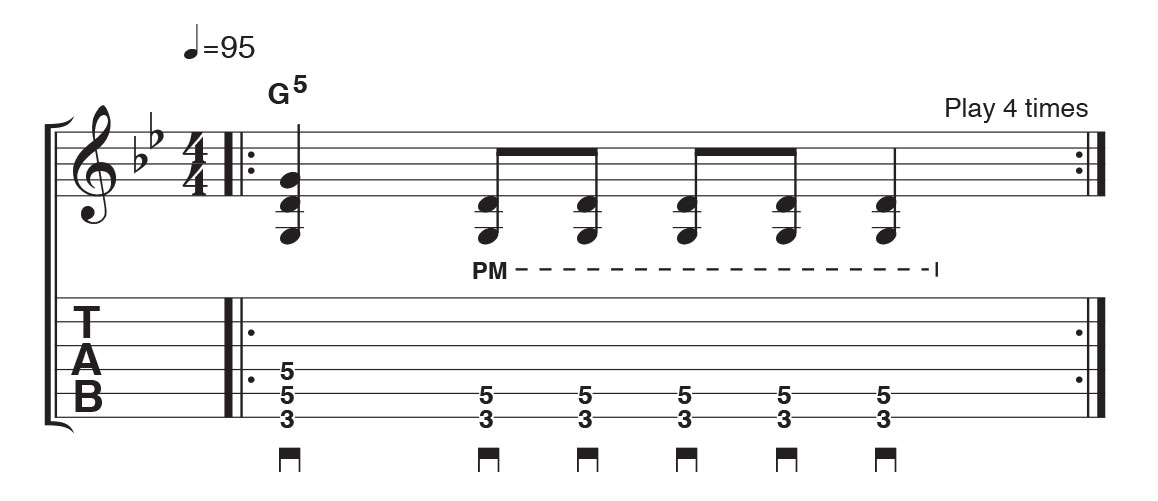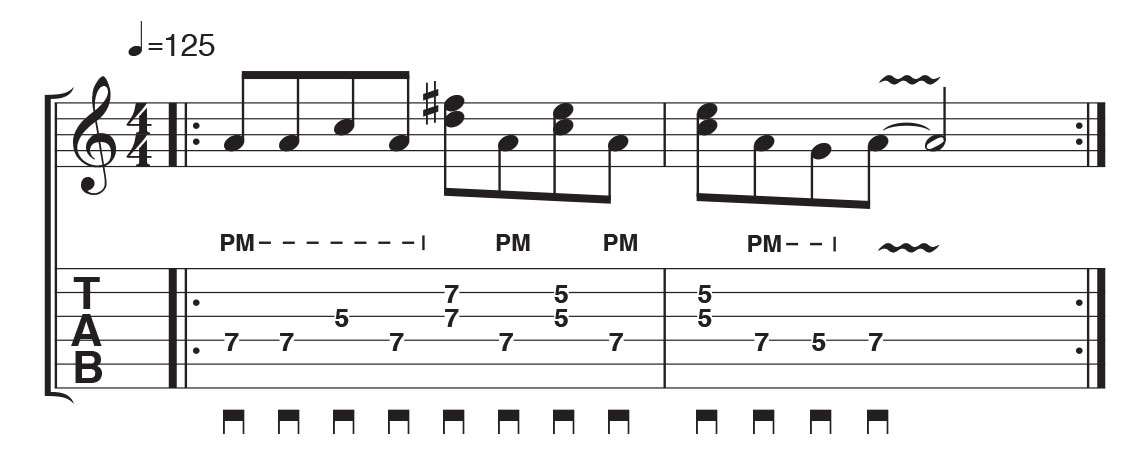How to improve your palm-muting
Master the guitar technique that's a staple of all genres

Try out this easy guitar technique, as heard in rock, metal, funk, disco and more…
“What’s palm muting all about then?”
This technique proves that there’s truth to the old adage that a guitarist’s tone is ‘all in the hands’, as you’ll be using your pick hand to control your strings’ resonance and give them a dry, chunky sound. Palm muting is easy, so any guitarist can have a go.
“Easy sounds good! Can you recommend some music to check out?”
Sure! This technique is used extensively in heavy metal rhythm, so, for instance, the riff at 0:04 in Metallica’s Master Of Puppets mixes palm-muted single notes with un-muted powerchords. Green Day’s Basket Case also swaps between muted and un-muted notes. For a lighter feel, the opening rhythm guitar line in Tom Petty’s I Won’t Back Down is played with palm mutes. The technique is much used in funk and disco too, but it’s often combined with fret-hand muting, so it can be hard to hear which hand is creating the effect.
“Plenty to listen to then. How do I get started?”
Take a look at the boxout on the right where we’ve outlined some basics. All you have to do is dampen your guitar’s sound ever so slightly by placing your hand on the strings near the bridge. Naturally it’s a balance - move your hand too far onto the strings and you’ll mute them out all together. Aim for somewhere between completely un-muted or totally deadened.
Want all the hottest music and gear news, reviews, deals, features and more, direct to your inbox? Sign up here.
“It’s quite easy but my sound isn’t great. Any tips?”
A dirtier sound can really help palm-muted riff s cut through. Try upping the gain and treble on your amp or using an overdrive or distortion pedal. It’s fine to use a clean sound, but you may find you need to be more accurate with your palm mutes.
“Got it! Shall we play some music?”
Good idea! Our first riff , tabbed below, shows a simple hard rock powerchord idea. The G5 chord is easy, but notice that the first downstroke is played without muting. Remember what we said about Basket Case? This is it in a nutshell - a mix of muted and un-muted notes provides contrast.
“I get it. The first chord is loud and the others are dry and chunky. What’s next?”
Our second tab example is a bit more involved. You’ll need to take care as you switch between muted single notes and un-muted diads (two-note shapes). Pro tip! Position your palm mute on the bass strings so that the diads on the higher strings ring out clearly.
Palm muting explained
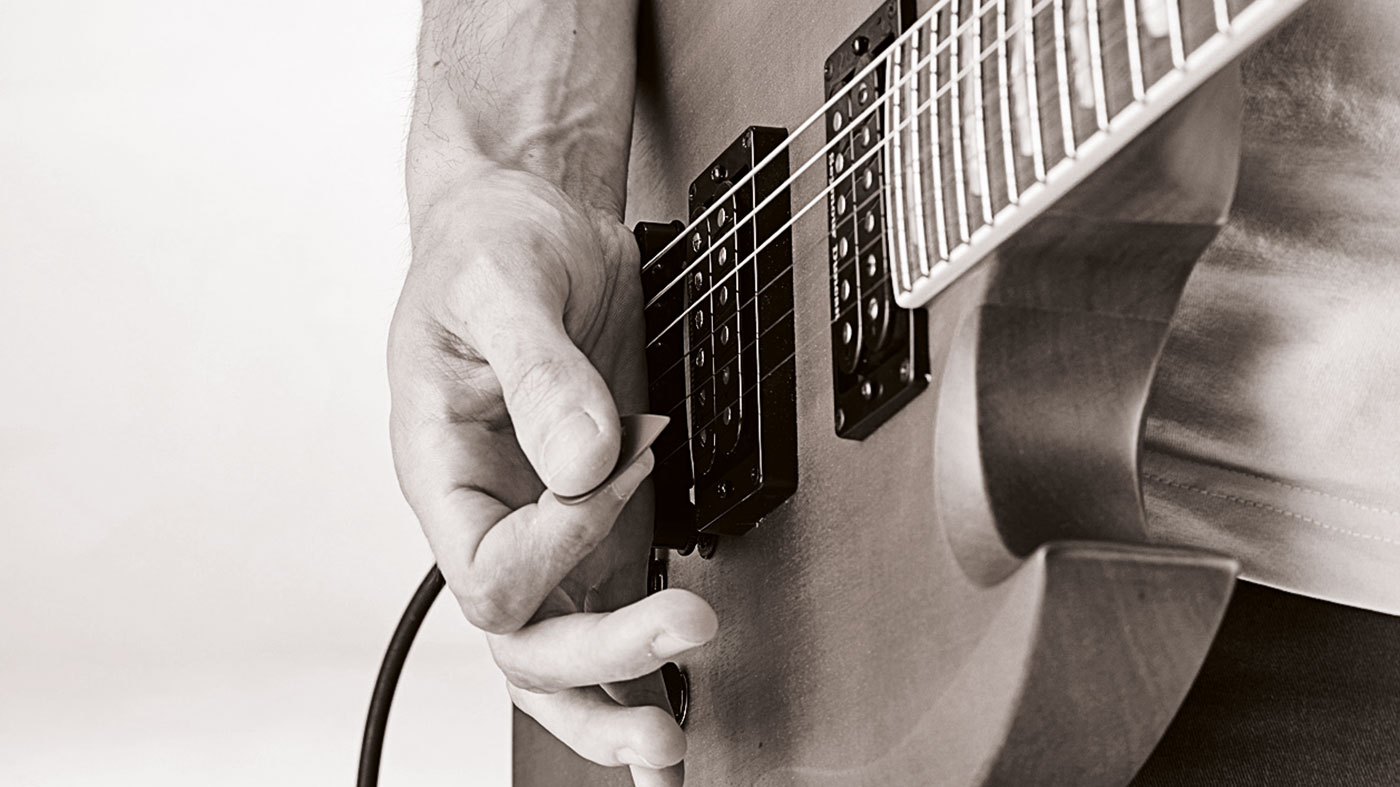
STEP 1: Hold your pick comfortably and rest the side of your palm on the strings where they meet the bridge. Fret a note and pick the string to see how it sounds.
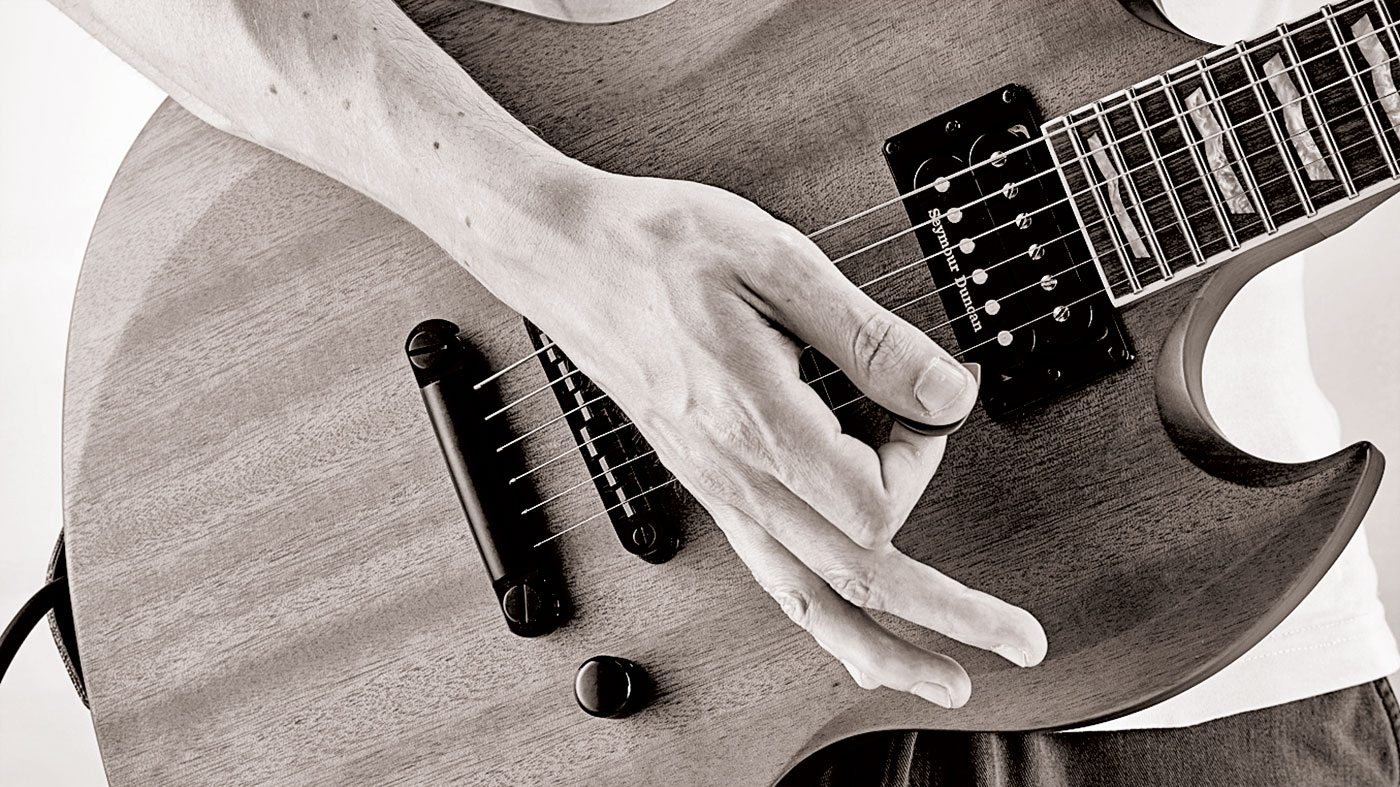
STEP 2: Gradually move your hand farther onto the strings for a stronger dampening effect or onto the bridge to allow the strings to ring out more clearly.
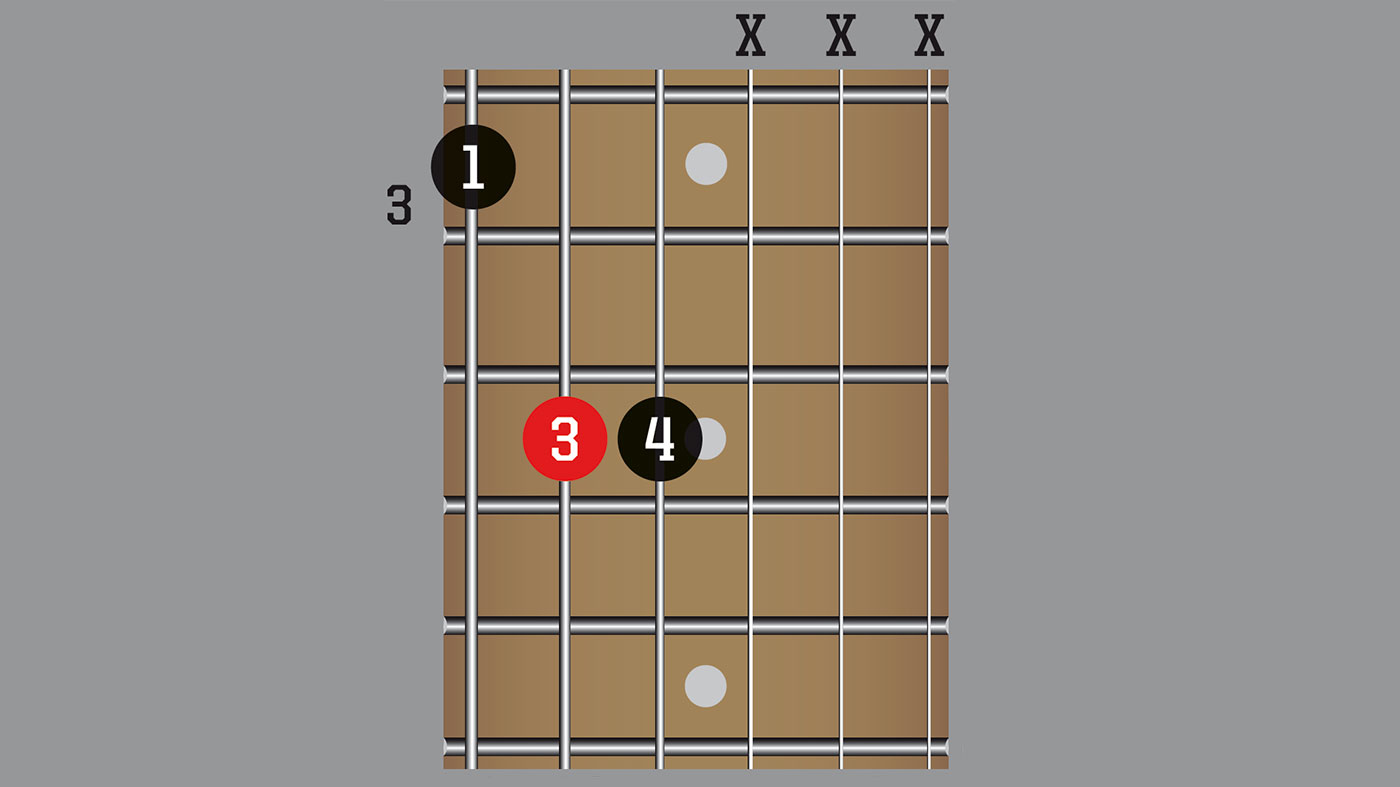
STEP 3: You’ve tried a single note, now try fretting this G5 powerchord. Position your pick hand so that you mute out all three of the guitar’s bass strings.
Basic powerchord riff
The first G5 chord rings out, totally un-muted. From there, simply place the side of your pick hand on the strings to give a chunky rock style muted sound.
Funky hard rock
Here the un-muted two-note shapes contrast with the damped sound of the palm-muted single notes. Add vibrato to the final note to make it sing.
Total Guitar is Europe's best-selling guitar magazine.
Every month we feature interviews with the biggest names and hottest new acts in guitar land, plus Guest Lessons from the stars.
Finally, our Rocked & Rated section is the place to go for reviews, round-ups and help setting up your guitars and gear.
Subscribe: http://bit.ly/totalguitar
